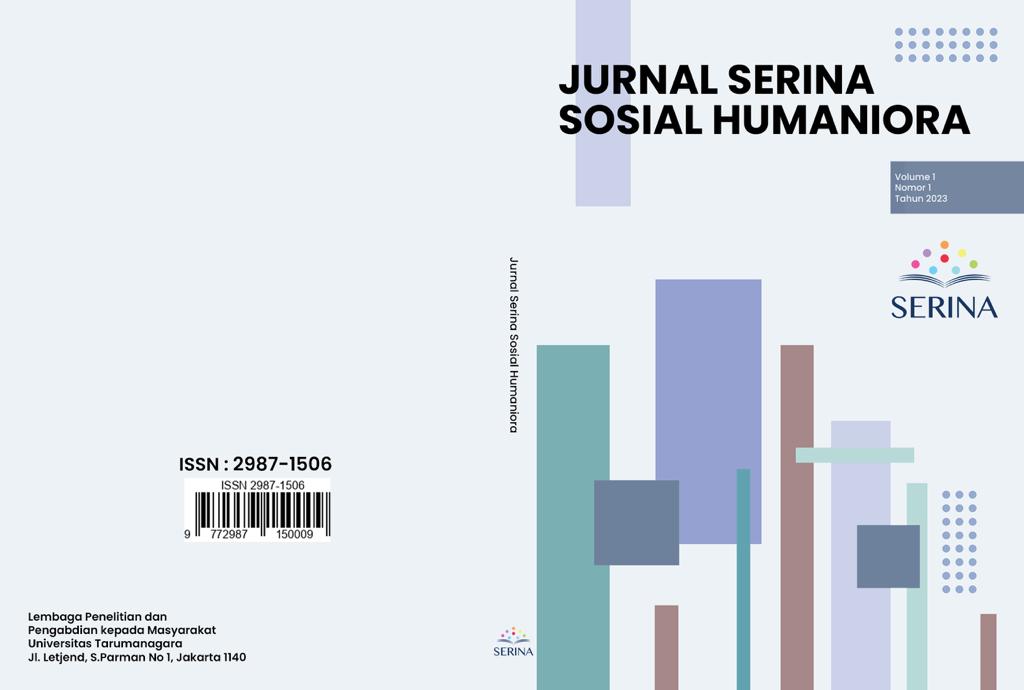RANCANGAN PROGRAM LIVE SESSION: HALLO-COLLABORATION ANTAR MENTEE DAN MENTOR
Main Article Content
Abstract
ABSTRACT
Life that runs dynamically becomes a challenge every day for each individual. What's more, in the business environment, primarily, to be able to manage these changes, it starts with involving the company's own members (employee engagement). This is similar to what a student member experiencing an internship in a technology-based healthcare company feels. In certain situations, there is still closeness and interaction between students and their mentors. In fact, students who carry out this internship are expected to have certain competency standards such as understanding the flow of business processes, understanding the roles they carry, and this can also providing certain innovations to improve business processes. Therefore, the author proposes to create a program namely "Hallo-Collaboration" which aims to increase the involvement of students who are interns (mentees) and their body mentors. As a result, this program helps to create a friendly atmosphere and conversation between mentees and their mentors, and can help maintain relationships.
Keywords: Employee engagement, Positive organizational culture, college students
ABSTRAK
Kehidupan yang berjalan dinamis menjadi tantangan tersendiri setiap hari nya bagi setiap individu. Terlebih lagi, dalam lingkungan bisnis, utamanya, untuk dapat mengelola perubahan tersebut, dimulai dengan melibatkan anggota perusahaan itu sendiri (employee engagement). Hal ini serupa yang dirasakan oleh anggota mahasiswa yang menjalankan magang yang dialami di salah satu perusahaan kesehatan berbasis teknologi. Dalam situasi tertentu, masih kurangnya kedekatan maupun keterlibatan yang terjadi antar mahasiswa dan mentor-nya. Padahal, mahasiswa yang menjalankan magang ini diharapkan memiliki standar kompetensi tertentu seperti pemahaman alur proses bisnis, pemahaman peran yang diemban, dan hal ini juga dapat memberikan inovasi tertentu untuk meningkatkan proses bisnis. Oleh karena itu, penulis mengusungkan untuk membuat program berupa “Hallo-Collaboration” yang bertujuan untuk meningkatkan keterlibatan mahasiswa yang magang (mentee) dan body mentor-nya. Hasilnya, program ini membantu untuk membuat suasana menjadi akrab dan adanya perbincangnan antar mentee dan mentor-nya, dan dapat membantu menjaga relasi.
Kata Kunci: Employee engagement, positive organizational culture, mahasiswa
Article Details
References
Aktar, A., & Pangil, F. (2017). Antecedents and consequences of employee engagement: A conceptual study. IOSR Journal of Business and Management, 19(06), 54–67. https://doi.org/10.9790/487x-1906065467
Caldwell, C., Licona, B., & Floyd, L. (2015). Internal marketing to achieve competitive advantage. International Business Management. https://doi.org/10.3968/%X
Crim, D., & Seijts, G. (2017, December 4). What engages employees the most or, the ten CS of employee engagement. Ivey Business Journal. Retrieved November 17, 2022, from https://iveybusinessjournal.com/publication/what-engages-employees-the-most-or-the-ten-cs-of-employee-engagement/
Freeman, R. E. (2010). Strategic management: A stakeholder approach. Cambridge, NY: Cambridge University
Lockwood, N. R. (2007). Leveraging Employee Engagement for competitive advantage. SHRM Research Quarterly. http://doi.org/10.1109/HICSS.2007.324
Macey, W. H., & Schneider, B. (2008). The meaning of employee engagement. Industrial and Organizational Psychology, 1(1), 3–30. https://doi.org/10.1111/j.1754-9434.2007.0002.x
Parent, J. D., & Lovelace, K. J. (2018). Employee engagement, positive organizational culture and individual adaptability. On the Horizon, 26(3), 206–214. https://doi.org/10.1108/oth-01-2018-0003
Pfeffer, J. (1998). Seven practices of successful organizations. California Management Review, 40(2), 96–124. https://doi.org/10.2307/41165935
Robison, J. (2022, September 8). Building engagement in this economic crisis. Gallup.com. Retrieved November 16, 2022, from https://news.gallup.com/businessjournal/115213/building-engagement-economic-crisis.aspx
Saks, A. M. (2006). Antecedents and consequences of employee engagement. Journal of Managerial Psychology, 21(7), 600–619. https://doi.org/10.1108/02683940610690169
Schaufeli, W. B., & Bakker, A. B. (2004). Job demands, job resources, and their relationship with burnout and Engagement: A multi-sample study. Journal of Organizational Behavior, 25(3), 293–315. https://doi.org/10.1002/job.248
Schaufeli, W. B., & Bakker, A. B. (2010). Defining and measuring work engagement : Bringing clarity to the concept. In Work engagement : A handbook of essential theory and research. (pp. 10–24). essay, Psychology Press.
Wagner, R., & Harter, J. K. (2006). 12: The great elements of managing. Washington,
DC: The Gallup Organization.
Wagner, R., & Harter, J. K. (2006). 12: The great elements of managing. Washington,
DC: The Gallup Organization.
Wagner, R., & Harter, J. K. (2006). 12: The great elements of managing. Washington,
DC: The Gallup Organization.
Wagner, R., & Harter, J. K. (2006). 12: The great elements of managing. Washington,
DC: The Gallup Organization.
Wagner, R., & Harter, J. K. (2006). 12: The great elements of managing. Washington,
DC: The Gallup Organization.
Sirisetti, S. (2012). Employee engagement culture. The Journal of Commerce, 4(1), 72–74. https://doi.org/https://web.archive.org/web/20180421013055id_/http://joc.hcc.edu.pk/articlepdf/JOC201263_72_74.pdf
Wagner, R., & Harter, J. K. (2006). 12: The great elements of managing. Washington, DC: The Gallup Organization.
Weinzimmer, L., Robin, J., & Michel, E. (1970). The measurement of strategic orientation and its efficacy in predicting financial performance. Journal of Business Strategies, 29(2), 81–98. https://doi.org/10.54155/jbs.29.2.81-98.



